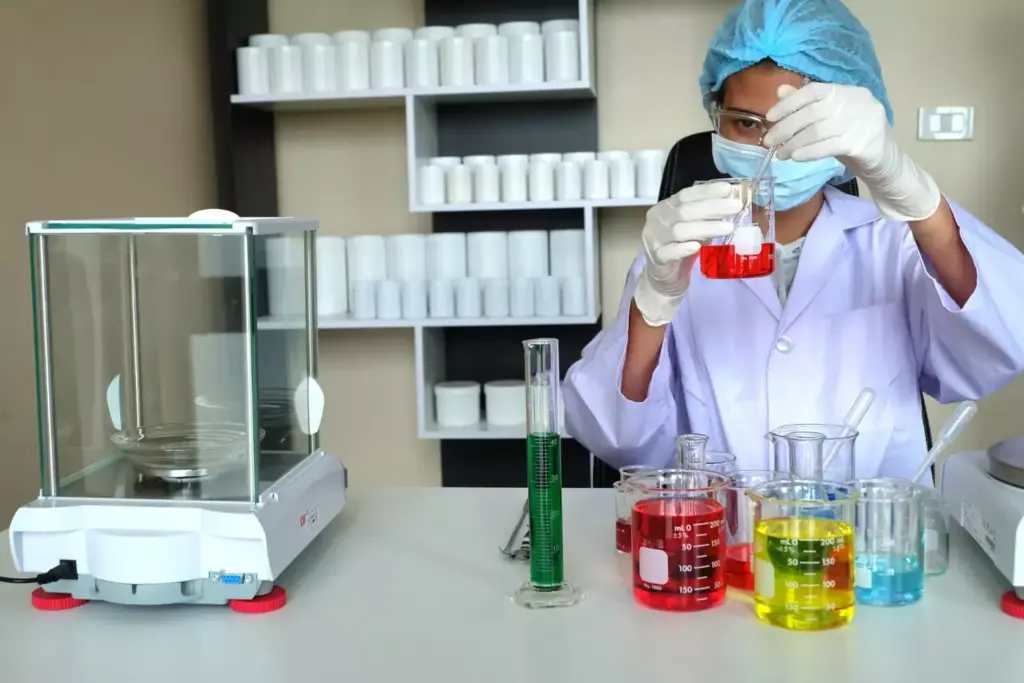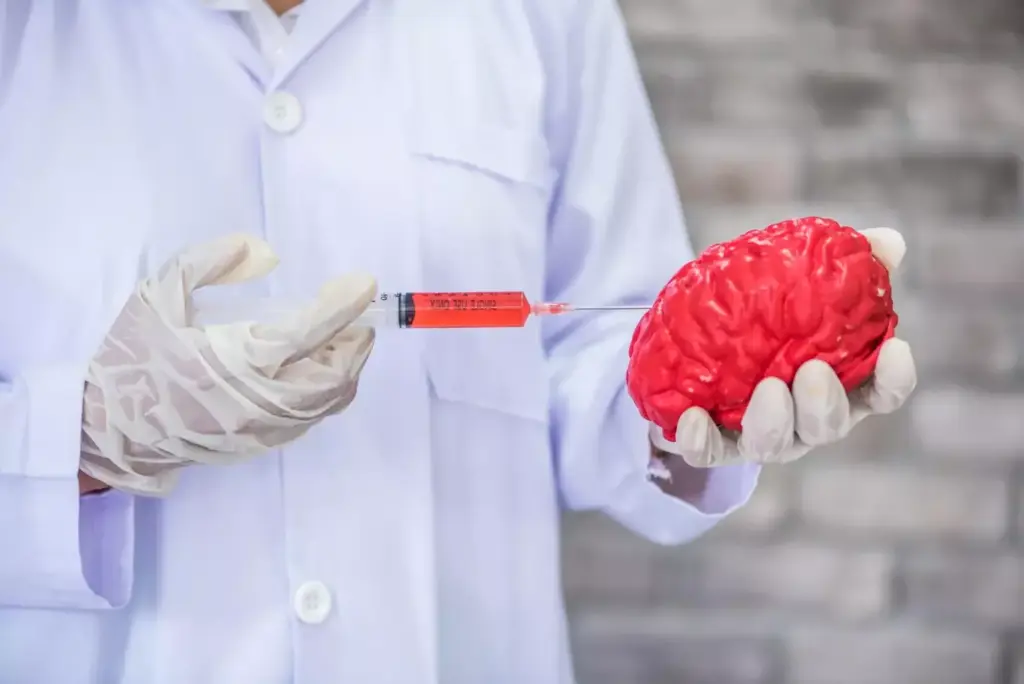Last Updated on November 3, 2025 by mcelik

At Liv Hospital, we know how tough it is for patients and families with aggressive brain tumors. New glioblastoma chemotherapy drugs and therapies give hope for better treatments. We aim to offer top-notch healthcare and support for patients from around the world, including those with brain cancer.
Studies and talks at events like ESMO have shown the latest in brain tumor medication and treatments. New therapies like MT-125 and Fusion Superkine could be big wins against brain cancer. Our team works hard to keep up with these new discoveries to give our patients the best care.

The field of brain cancer treatment is changing fast. This is thanks to new chemotherapy drugs and fresh ways to treat the disease. As we learn more about brain tumors, we see that glioblastoma and other aggressive tumors are big challenges.
Glioblastoma is known for its bad outlook and high chance of coming back. It’s a key area for research into brain tumor chemotherapy drugs. The urokinase-type plasminogen activator (uPA) system is seen as a good target for treatment because it helps tumors spread.
Aggressive brain tumors like glioblastoma need a detailed treatment plan. This plan often includes surgery, radiation, and chemotherapy.
The complexity of glioblastoma means we need a variety of treatments. This includes:
Brain cancer treatments have changed a lot. Before, chemotherapy and radiation were the main treatments. But now, we have targeted therapies and immunotherapies too. For example, glioblastoma drugs now target specific molecular pathways, making treatment more tailored.
Important progress includes:
These advances show how brain cancer treatment is always evolving. They highlight the need for ongoing research and innovation to better help patients.

Temozolomide is a key treatment for glioblastoma, a fast-growing brain cancer. We’ll look at its role in treatment, how it works, and its success in patients.
Temozolomide damages cancer cells’ DNA, stopping them from growing. It’s good at reaching brain cancer because it can get past the blood-brain barrier. This drug makes cancer cells die, slowing tumor growth.
A study on PubMed shows temozolomide helps glioblastoma patients a lot. It works best when used with other treatments.
Studies show temozolomide is effective against glioblastoma. It’s used with radiation therapy first, then alone. This approach helps patients live longer and survive without the cancer growing back.
| Treatment Regimen | Median Overall Survival | Progression-Free Survival |
|---|---|---|
| Radiation + Temozolomide | 14.6 months | 6.9 months |
| Radiation Alone | 12.1 months | 5.0 months |
The data shows temozolomide is vital in treating glioblastoma. It improves patient outcomes. As we find new ways to fight brain cancer, adding temozolomide to these treatments could lead to even better results.
Bevacizumab targets the blood supply that tumors need to grow. It’s known as Avastin and is a new way to fight glioblastoma. This therapy has shown great promise in treating aggressive brain tumors.
Bevacizumab stops new blood vessels from forming. Tumors need blood to grow and spread. By cutting off this supply, bevacizumab starves the tumor of what it needs to grow.
This approach is key in slowing tumor growth and helping patients.
Bevacizumab is often paired with other treatments to boost its effect. Combination therapies have shown great promise in improving patient outcomes. They attack the tumor from different angles. Some common combinations include:
Clinical trials are looking into the best ways to use bevacizumab with other treatments. They aim to make it more effective while reducing side effects.
Lomustine and carmustine are key in fighting glioblastoma. They are important in managing this aggressive brain cancer. These drugs offer different ways to treat patients based on their needs.
Lomustine and carmustine can be given through the bloodstream. This method reaches the tumor but can cause side effects. Carmustine is also used in Gliadel wafers, placed in the tumor during surgery.
This local method can make the drug more effective. It also reduces side effects.
Choosing between these methods depends on several factors. These include the disease stage, patient health, and tumor type. Our medical team helps patients choose the best treatment.
Lomustine is effective in treating glioblastoma that comes back. Studies show it can help patients live longer. Carmustine, given systemically or in Gliadel wafers, also helps manage the disease.
These drugs are essential in treating glioblastoma. Knowing their benefits and limits helps doctors create better treatment plans. This can improve patient outcomes in this tough disease.
Tumor Treating Fields are a new way to fight glioblastoma. This method, using a device called Optune, has shown great promise in helping patients.
How Tumor Treating Fields Work
This therapy uses electrical fields to stop tumor cells from growing. The Optune device is worn by the patient. It sends these fields to the tumor. Studies show this can kill tumor cells and slow their growth.
The therapy works by using electrical fields to stop cancer cells from dividing. Optune applies these fields at specific frequencies. This makes it hard for tumor cells to divide. It’s used with chemotherapy to make it work better.
Trials have shown that adding Optune to chemotherapy helps glioblastoma patients live longer. Most side effects are mild. The most common is skin irritation where the device is placed.
Survival Benefits
Using Tumor Treating Fields can greatly increase survival chances for glioblastoma patients. By adding Optune to standard treatments, patients see better survival rates. This gives new hope for managing this tough condition.
Conclusion on Tumor Treating Fields
Tumor Treating Fields, through Optune, are a big step forward in glioblastoma treatment. Understanding how it works and seeing trial results shows it’s a valuable treatment option for patients.
Immunotherapy, led by PD-1 inhibitors, is changing how we fight brain cancer. These treatments boost the body’s immune system. They offer hope for treating aggressive brain tumors.
Pembrolizumab and nivolumab are key PD-1 inhibitors for brain cancer. They block the PD-1 protein on T-cells. This lets these immune cells attack cancer cells better.
Here’s how they work:
For more on immunotherapy, check out our detailed guide.
Studies show different results for PD-1 inhibitors in brain metastases and primary brain tumors. In brain metastases, they work well, mainly in melanoma and non-small cell lung cancer.
In primary brain tumors, like glioblastoma, results are mixed. Some studies see slight survival boosts, while others show little effect.
Key findings include:
As we learn more, we’re figuring out how to make PD-1 inhibitors better for brain cancer. There are hurdles, but these treatments could greatly help patients.
MT-125 is a major breakthrough in treating brain cancer, bringing new hope to patients. It’s a next-generation medicine made to tackle glioblastoma, a very aggressive brain tumor.
MT-125 targets novel molecular pathways that are key for brain cancer growth. These pathways control tumor growth, invasion, and resistance to treatment. By blocking these targets, MT-125 aims to stop glioblastoma cells from growing aggressively.
MT-125 is in rigorous clinical trials to check its safety and effectiveness in glioblastoma patients. These trials are happening at many centers around the world, making sure a wide range of patients are involved.
The trial status is as follows:
| Trial Phase | Status | Patient Enrollment |
|---|---|---|
| Phase I | Ongoing | 50 patients |
| Phase II | Recruiting | 100 patients |
Patients and doctors can learn more about joining these trials through clinical trial registries or by contacting the trial centers directly.
Fusion Superkine is a new hope for glioblastoma treatment. It uses engineered immunotherapy to boost the body’s fight against glioblastoma cells. This could be a game-changer in treating this aggressive brain cancer.
Fusion Superkine works differently than old treatments. It aims to create a stronger, more precise immune attack. This targeted approach could make treatments more effective and cut down on side effects.
The idea behind Fusion Superkine is to mix various immune signals. This creates a superkine that better activates the immune system against glioblastoma cells. It’s a big leap forward in immunotherapy.
Early tests of Fusion Superkine in glioblastoma patients look good. These studies show it’s safe and might help control tumors and extend life. The preliminary data make Fusion Superkine a promising new option for glioblastoma treatment.
We’re excited to see more results from ongoing trials. Fusion Superkine could greatly improve treatment outcomes for glioblastoma patients. It’s a major step forward in neuro-oncology.
Personalized cancer vaccines are changing how we treat brain tumors. They offer a custom approach to fighting cancer. These vaccines help the immune system find and destroy cancer cells, leading to better treatment results.
The journey to create a personalized cancer vaccine starts with a tumor biopsy. The sample is studied to find specific mutations and neoantigens in the cancer cells. This info helps make a vaccine that targets these unique traits.
Key steps in vaccine creation include:
Clinical trials have shown great promise for personalized cancer vaccines in treating brain tumors. Patients with glioblastoma and other aggressive brain cancers have seen better survival rates and less tumor growth in some cases.
Patient selection criteria for personalized cancer vaccine therapy typically include:
As research goes on, we’ll likely see more patients benefit from personalized cancer vaccines.
New ways to deliver drugs are being explored for brain cancer treatment. These methods aim to get drugs directly to the tumor. This could make treatments more effective.
One big challenge in treating brain cancer is the blood-brain barrier. This barrier stops many drugs from getting to the brain. Scientists are looking into new ways to get around this barrier.
Methods like aerosolized delivery and nanoparticles are being tested. They might help drugs get past the blood-brain barrier. Studies suggest these methods could be effective.
New drugs are being made using these advanced delivery methods. For example, sacituzumab govitecan is being tested for brain tumors. These drugs are in clinical trials to check their safety and how well they work.
The work on these new delivery methods and drugs is a big step forward in treating brain cancer. As research goes on, we’ll likely see even better treatments. This gives hope to those fighting brain cancer.
Understanding brain cancer treatments is complex. We’ve looked at therapies like temozolomide, bevacizumab, and tumor treating fields. These have shown promise in fighting glioblastoma and other brain tumors.
New research and trials bring hope to brain cancer patients. At Liv Hospital, we aim to offer top-notch care to international patients. We use the latest in brain cancer medicine to better treatment results.
As we learn more about brain cancer, it’s key for patients to stay updated on new treatments. This way, they can make informed choices about their care. They can get the best treatment options available.
Temozolomide is a key treatment for glioblastoma, a fast-growing brain cancer. It stops cancer cells from making copies of themselves. This slows down the tumor’s growth.
Bevacizumab stops tumors from getting the blood they need to grow. It blocks new blood vessel formation. This cuts off the tumor’s supply of nutrients and oxygen.
Lomustine and carmustine are chemotherapy drugs for glioblastoma. They can be given through the body or placed directly in the tumor during surgery. This is done with Gliadel wafers.
Tumor Treating Fields use electrical fields to stop cancer cells from dividing. This therapy, like Optune, can help patients live longer when used with other treatments.
PD-1 inhibitors boost the immune system’s fight against cancer. They have shown to be effective against brain tumors and metastases.
MT-125 is a new treatment for brain cancer in clinical trials. It targets specific growth pathways in brain cancer. This could lead to a more effective treatment.
Fusion Superkine is a new immunotherapy that works differently than old ones. It aims to fight glioblastoma more effectively. This could mean a stronger fight against cancer cells.
Personalized cancer vaccines are made from a patient’s tumor cells. They start with a tumor biopsy. Then, a vaccine is made to target the patient’s cancer mutations.
Aerosolized and other new delivery methods aim to get drugs past the blood-brain barrier. This barrier makes treating brain cancer hard. These methods could make treatments more effective.
Yes, many new therapies are being developed. These include better immunotherapies, targeted treatments, and new ways to deliver drugs. These could lead to better treatment options for brain cancer patients.
Patients can keep up with new treatments by talking to their doctors and researching online. They should also follow clinical trial results. Places like Liv Hospital offer the latest treatments.
Subscribe to our e-newsletter to stay informed about the latest innovations in the world of health and exclusive offers!
WhatsApp us